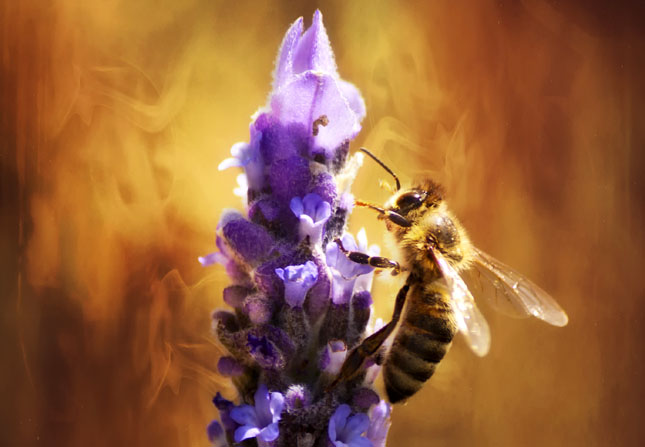-
Lisa Palmer, Yale Environment 360
New Explanation for Bee Die-Offs and What It Means for Human and Environmental Health
May 12, 2016 By Wilson Center Staff
Specimens of goldenrod sewn into archival paper folders are stacked floor to ceiling inside metal cabinets at the Smithsonian National Museum of Natural History. The collection, housed in the herbarium, dates back to 1842 and is among five million historical records of plants from around the world cataloged there. Researchers turned to this collection of goldenrod – a widely distributed perennial plant that blooms across North America from summer to late fall – to study concentrations of protein in goldenrod pollen because it is a key late-season food source for bees.
The newer samples look much like the older generations. But scientists testing the pollen content from goldenrod collected between 1842 and 2014, when atmospheric concentrations of carbon dioxide rose from about 280 parts per million to 398 ppm, found the most recent pollen samples contained 30 percent less protein. The greatest drop in protein occurred from 1960 to 2014, when the amount of carbon dioxide in the atmosphere rose dramatically. A field experiment in the same study that exposed goldenrod to CO2 levels ranging from 280 to 500 ppm showed similar protein decreases.
More than 100 previous studies have shown that elevated levels of atmospheric carbon dioxide decrease the nutritional value of plants, such as wheat and rice. But the goldenrod study, published last month, was the first to examine the effects of rising CO2 on the diet of bees, and its conclusions were unsettling: The adverse impact of rising CO2 concentrations on the protein levels in pollen may be playing a role in the global die-off of bee populations by undermining bee nutrition and reproductive success.Continue reading on Yale Environment 360.
Sources: Proceedings of the Royal Society B, Yale Environment 360.
Photo Credit: Flickr user Theophilos Papadopoulos.
 A Publication of the Stimson Center.
A Publication of the Stimson Center.



